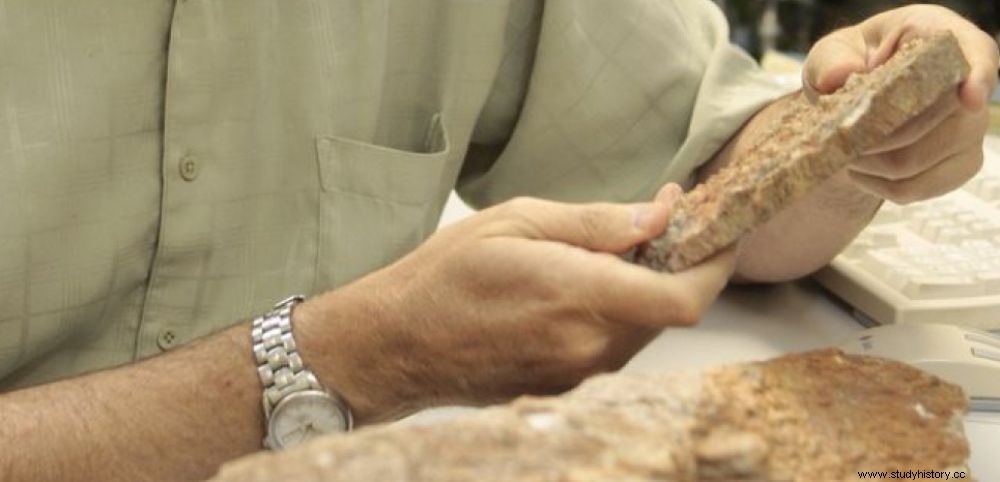 Mark Harrison examining rocks containing zircons.
Mark Harrison examining rocks containing zircons. HELL . Until now most scientists assumed that the early Earth, which was formed around 4.54 billion years ago, was an inhospitable environment and very unsuitable for the development of life. "The early Earth was not a hellish, boiling or dry planet" believes Mark Harrison, of the University of California-Los Angeles, co-author of a new study whose results date the beginnings of life on Earth to at least 4.1 billion years ago. .
The proof in a zircon
To arrive at this estimate, the authors, who publish their work in the Proceedings of the National Academy of Sciences, studied nearly 10,000 zircons formed from magma and molten rocks and collected in Australia. Zircons are the oldest known minerals (some are found to be 4.4 billion years old) and they often contain inclusions that can reveal the nature of the environment in which they were formed. "These are real time capsules " underlines Elizabeth Bell, main author of the study. Of the 10,000 zircons analyzed, the researchers retained 656 containing inclusions and studied in detail 79 of them. And they discovered in one of them , in two different places, graphite inclusions, pure carbon This particular zircon was dated to 4.1 billion years old thanks to the analysis of the uranium/lead ratio and the graphite it contains is probably older, explain the scientists.
PHOTOSYNTHESIS . Additional analyzes of these graphite inclusions revealed a ratio of carbon 12/carbon 13 isotopes specifically associated with the presence of life, so it is a biogenic carbon, an element resulting from a biological process. A strong clue indicating that life existed at least 4.1 billion years ago, but not yet absolute proof. Other zircons are to be analyzed and reveal the same story:"Primitive Earth must have looked a lot more like it is now than we thought. And with the right ingredients, life seems to form very quickly" summarizes Mark Harrisson. The hypothesis that the appearance of life on Earth dates from before the Great Late Bombardment, about 4 billion years ago (a period of meteor showers and comets which notably formed the lunar craters) " would have been considered shocking twenty years ago" emphasizes the researcher. But today it is expanding and discoveries like the latter reinforce it, Sciences et Avenir already mentioned this possibility in 2009.
